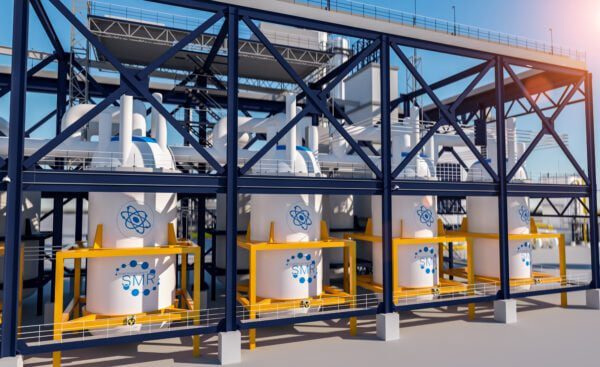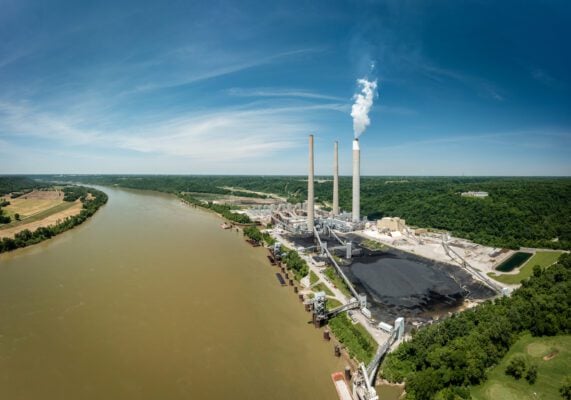Gov. Mike Braun signed a set of bills this week that he says will position Indiana as a leader in nuclear energy while expanding the state’s energy production capacity.
The legislation reflects an “all-of-the-above” approach that includes nuclear power, water access, advanced transmission and infrastructure funding tied to energy-intensive businesses.
The centerpiece of Braun’s energy agenda is small modular nuclear reactors (SMRs), a technology that offers carbon-free, always-on power. Several of the bills signed are aimed at accelerating SMR development and preparing Indiana’s energy grid for increasing demand from industries such as tech and manufacturing.

“As demand for electricity accelerates, the country will soon be divided into states that can meet this demand and those that can’t,” Braun said during the bill signing ceremony. “We are stepping up to the challenge, expanding our energy portfolio, deploying nuclear energy and innovating to power Indiana’s economy into the future, with affordability and reliability always at top of mind.”
Among the signed legislation:
- Senate Enrolled Act 423 creates a pilot program for small modular nuclear reactors.
- Senate Enrolled Act 424 allows utilities to recover development costs for SMRs.
- Senate Enrolled Act 425 establishes energy production zones to expedite new power projects.
- Senate Enrolled Act 422 supports advanced electric transmission systems.
- Senate Enrolled Act 4 addresses water-related energy infrastructure.
- House Enrolled Act 1007 requires large industrial energy users to fund 80 percent of grid upgrades needed for their operations.
The measures were praised by utility companies and economic development leaders who argue that the state must grow its capacity to attract high-energy businesses like data centers and battery manufacturers.
But consumer advocacy groups and environmental organizations have raised concerns about the financial risks and lack of clarity surrounding the state’s nuclear ambitions.
Citizens Action Coalition Executive Director Kerwin Olson has been vocal in his opposition to several of the energy bills, particularly those related to SMR development. In a February statement, Olson warned that the legislation “would force captive utility ratepayers to assume all the financial risk for ‘project development costs.’”

On social media, he added, “Why is grandma footing the bill for AEP and Google to think about Small Modular Reactors (SMRs)?”
The Hoosier Environmental Council also expressed skepticism, pointing to ongoing cost overruns at nuclear projects in other states, such as the Vogtle plant in Georgia. The organization questioned whether nuclear energy is the most cost-effective or sustainable solution, suggesting Indiana could make faster progress by investing in renewable energy and battery storage.
While Braun has described SMRs as essential to Indiana’s long-term energy strategy, critics warn that the technology remains years away from commercial viability and could strain public utility budgets in the meantime.
Indiana is expected to host two major nuclear-focused events in 2025: the National Governors’ Association nuclear energy retreat and the Global Nuclear Energy & Economic Summit at Purdue University in November.
Contact Health & Environmental Reporter Hanna Rauworth at 317-762-7854 or follow her on Instagram at @hanna.rauworth.
Hanna Rauworth is the Health & Environmental Reporter for the Indianapolis Recorder Newspaper, where she covers topics at the intersection of public health, environmental issues, and community impact. With a commitment to storytelling that informs and empowers, she strives to highlight the challenges and solutions shaping the well-being of Indianapolis residents.





